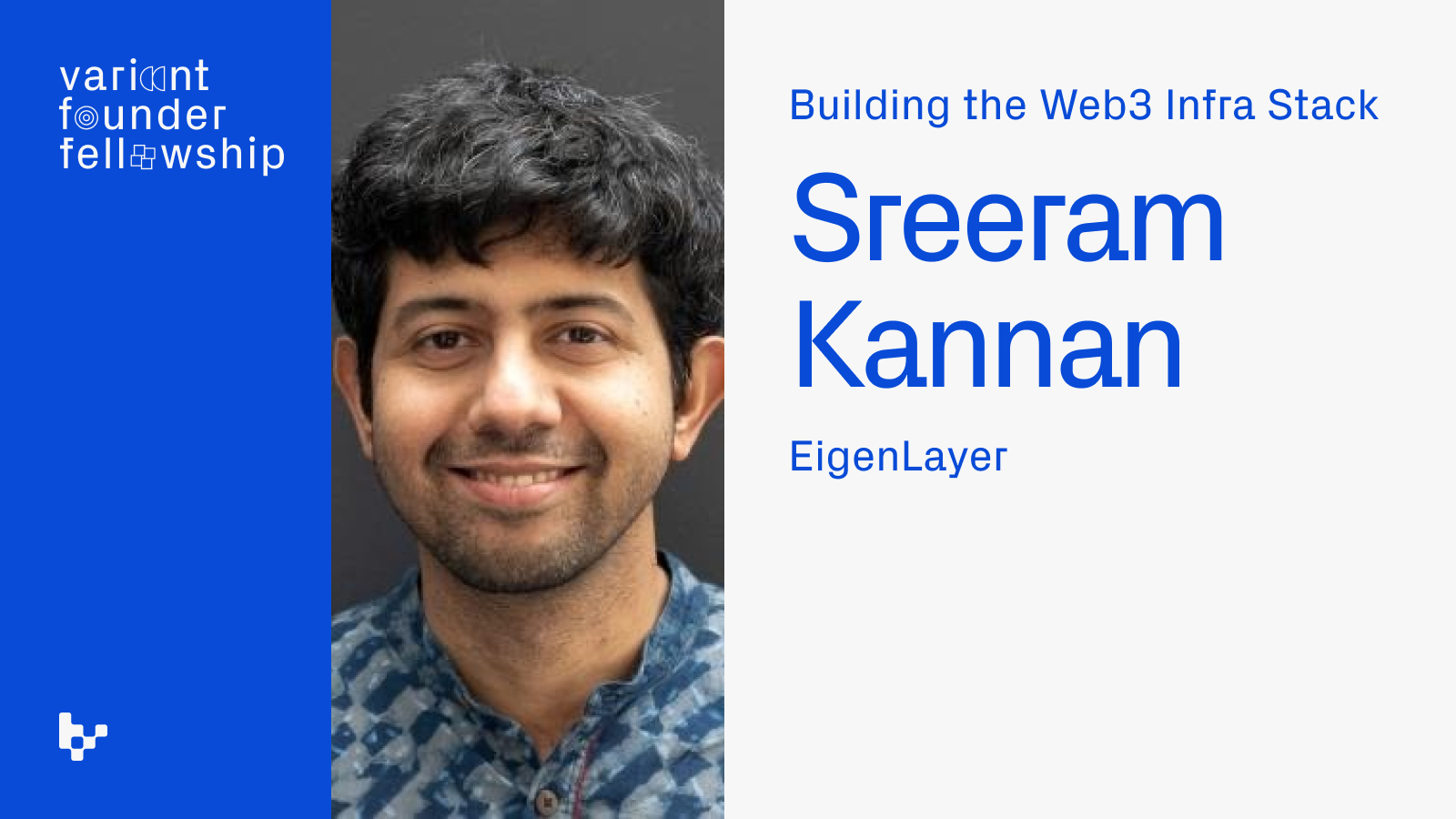Variant Team

Rethinking Decentralized Trust: EigenLayer’s Sreeram Kannan
If you attended this year’s EthCC in Paris, you probably heard a lot of buzz about EigenLayer and restaking. But as founder Sreeram Kannan told our Variant Founder Fellowship cohort, staking wasn’t the original point of EigenLayer—it was helping applications leverage blockchains’ decentralized trust networks.
Here he talks about creating infrastructure around decentralized trust, what it takes to hyperscale, and why new L1s don’t solve every problem. Catch our takeaways below the video.
Ethereum was “the first marketplace for decentralized trust.”
If you wanted to build a new application on Bitcoin, you’d have to build your own trust network. The introduction of Ethereum meant dapps could be built on top, with the trust flowing from Ethereum toward the applications. As Sreeram puts it, this was the key step in creating a “pseudonymous economy” because creators “don’t need to be trusted.” (See what Sreeram calls the “dividing line” between crypto and non-crypto solutions at 1:35.)
But that marketplace isn’t flexible enough.
When you drill down, you notice that Ethereum really has only one product. It takes the raw material of decentralized trust and sells it as block space. Projects have to work within its constraints; if they want to, say, reduce time to finality they have to leave the Ethereum ecosystem. Sreeram and his team built EigenLayer so projects could utilize a more flexible trust network while staying within the Ethereum ecosystem. (Listen to Sreeram explain how EigenLayer works at 7:15.)
You don’t need a new L1 to hyperscale.
The desire for scaling drove other teams to create new layer-1 chains such as Solana, Cosmos, and Avalanche. While Sreeram says his team looked at making an L1, they ultimately decided to leverage Ethereum’s built-in security instead. “You don’t need to go and build a new trust network for every new idea you have.” (Hear what swayed Sreeram against building a new L1 at 17:00.)
+++
This post is for general information purposes only. It does not constitute investment advice or a recommendation or solicitation to buy or sell any investment and should not be used in the evaluation of the merits of making any investment decision. It should not be relied upon for accounting, legal or tax advice or investment recommendations. You should consult your own advisers as to legal, business, tax, and other related matters concerning any investment. Certain information contained in here has been obtained from third-party sources, including from portfolio companies of funds managed by Variant. While taken from sources believed to be reliable, Variant has not independently verified such information. Variant makes no representations about the enduring accuracy of the information or its appropriateness for a given situation. This post reflects the current opinions of the authors and is not made on behalf of Variant or its Clients and does not necessarily reflect the opinions of Variant, its General Partners, its affiliates, advisors or individuals associated with Variant. The opinions reflected herein are subject to change without being updated.